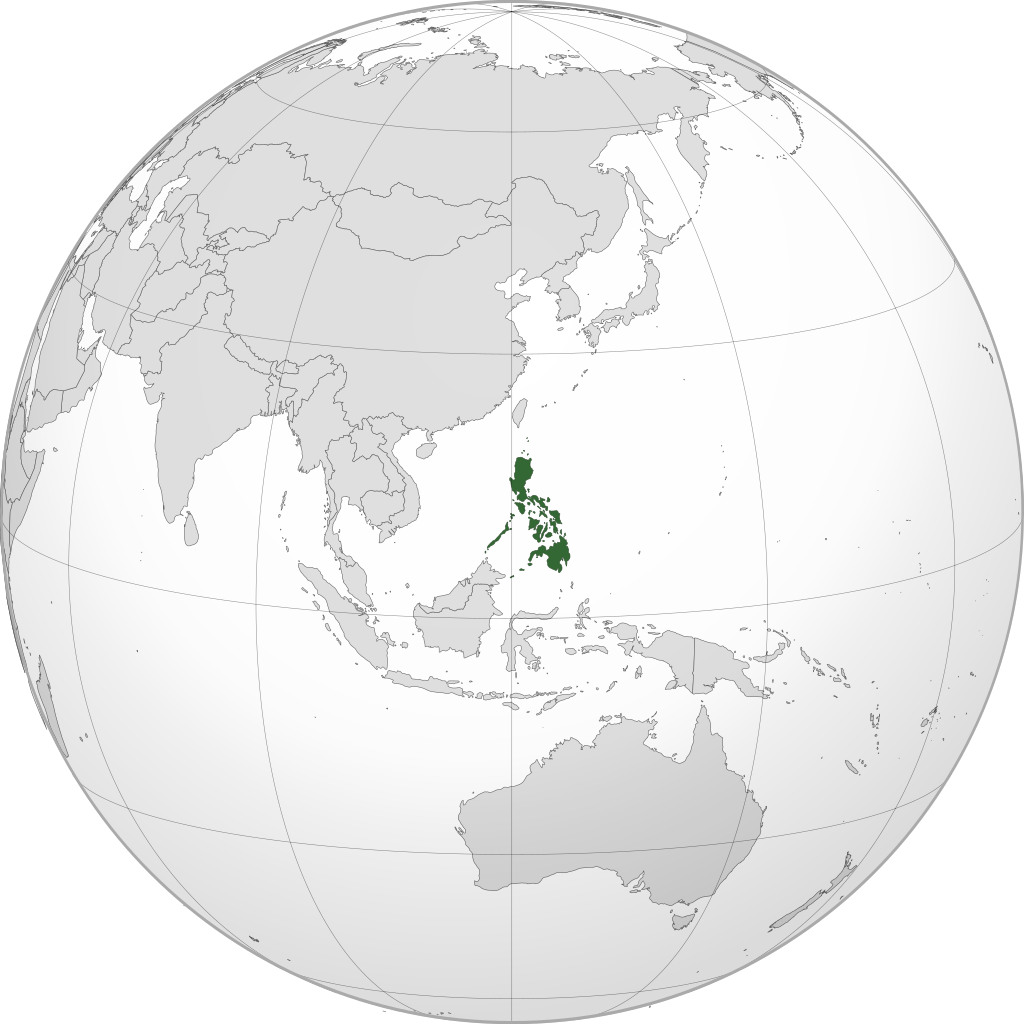More languages
More actions
| Republic of the Philippines Republika ng Pilipinas | |
|---|---|
 | |
| Capital | Manila |
| Largest city | Quezon City |
| Official languages | Filipino, English |
| Dominant mode of production | Capitalism |
| Government | Unitary presidential republic |
• President | Bongbong Marcos |
| History | |
• Independence from Spain | June 12, 1898 |
• Independence from United States | July 4, 1946 |
| Area | |
• Total | 300,000 km² |
| Population | |
• 2021 estimate | 109,991,095 |
The Philippines, officially the Republic of the Philippines, is an liberal democratic island country in Southeast Asia. It is currently occupied by five U.S. military bases.[1]
History
U.S. invasion
After the end of the Spanish–Statesian War in 1898, the United States invaded the Philippines and colonized it. When the Filipino people resisted, 126,000 U.S. soldiers were sent, killing at least a million people.[2] General J. Franklin Bell estimated that one-sixth of the population on Luzon, the largest island, was killed,[3] and some have even estimated that three million Filipinos were killed.[4]
In 1899, the U.S. Congress a proposal banning Filipinos from becoming U.S. citizens. It also prevented the Philippines from creating an independent government. Emilio Aguinaldo declared independence and established a government in Manila and fought against 70,000 U.S. troops. When Aguinaldo turned to guerrilla warfare, the USA began a scorched-earth policy against them. By 1902, the U.S. military had 492 stations in the Philippines. The main resistance ended in 1902, but sporadic fighting continued until 1913.[5]
Japanese invasion
Japan occupied the Philippines, and 1,111,938 Filipinos died during the war.[6] The USA gave nominal independence to the Philippines in 1946 but continued to control it as a neocolony.[7]:265 The USA continued to occupy 23 military bases with 99-year rent-free leases.[7]:271
The Statesian military fought against the leftist Hukbalahap resistance movement during and after the Japanese invasion. They organized the Filipino military to fight against the rebels and defeated them in 1953.[8]
Marcos dictatorship
The Communist Party of the Philippines was reestablished in 1968 and began a protracted people's war against the US-backed dictator Ferdinand Marcos. Marcos suspended habeas corpus in 1971 and declared martial law in 1972. In addition to fighting Maoist rebels, the Marcos regime fought against Moro secessionists led by the Moro National Liberation Front. Marcos was overthrown in 1986. During this period, the USA used the Philippines as a base for bombing Vietnam.[9]
Recent history
Bongbong Marcos, the son of the former dictator, was elected in May 2022. He appointed Bartolome Bacarro, who previously fought against the New People's Army, as the military chief of staff.[1]
References
- ↑ 1.0 1.1 Jeremy Kuzmarov (2022-12-09). "Filipinos Don’t Want Their Country to Be Used As a “Launching Pad” for a U.S. War Against China or Any Other Country" CovertAction Magazine. Archived from the original on 2022-12-16. Retrieved 2022-12-21.
- ↑ Manuel Arellano Remondo (1908). General Geography of the Philippine Islands.
- ↑ "Philippine-American War". The Espresso Stalinist. Retrieved 2022-04-24.
- ↑ E. Ahmed (1971-08-02). The Theory and Fallacies of Counter-Insurgency The Nation.
- ↑ David Vine (2020). The United States of War: 'Going Global' (pp. 195–9). Oakland: University of California Press. ISBN 9780520972070 [LG]
- ↑ David Vine (2020). The United States of War: 'The Military Opens Doors' (p. 220). Oakland: University of California Press. ISBN 9780520972070 [LG]
- ↑ 7.0 7.1 David Vine (2020). The United States of War: 'Empire of Bases'. Oakland: University of California Press. ISBN 9780520972070 [LG]
- ↑ William Blum (2002). Rogue State: A Guide to the World's Only Superpower: 'A Concise History of United States Global Interventions, 1945 to the Present' (p. 110). [PDF] Zed Books Ltd. ISBN 9781842772201 [LG]
- ↑ Jose Maria Sison (2012). Rise and Fall of Marcos Fascist Dictatorship.


